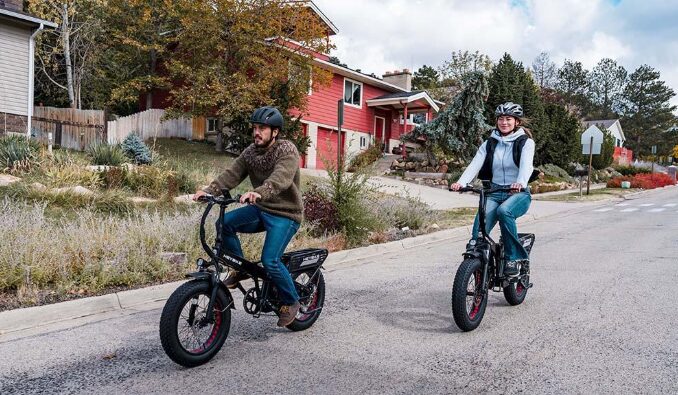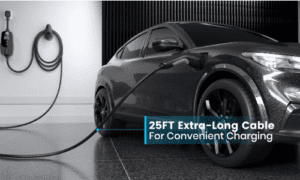Getting around cities isn’t what it used to be—and that’s a good thing.
Not too long ago, the only real options for getting from one end of town to the other were buses, taxis, or personal vehicles. Now? You’ve got choices, and they’re better than ever. Smart cities are reshaping transportation to be cleaner, faster, and easier for everyone. Urban mobility is no longer just about moving people—it’s about how we design cities that actually support daily life.
Whether you’re heading to work, running errands, or enjoying a weekend ride, the way we move is evolving. And those changes are driving something bigger: cities that are smarter, more sustainable, and more human-friendly. Let’s look at how modern mobility is shaping the cities of tomorrow, starting with one of the biggest shifts already happening around us.
Electric Bikes Are Changing How Cities Move
If you’ve noticed more people riding electric bikes in your neighborhood, you’re not imagining things. eBikes are everywhere—and they’re changing how cities function at street level. From solo riders to delivery drivers, these bikes are showing up in more places than ever.
One of the most noticeable changes in city travel is the shift toward lightweight electric transport. While electric cars and scooters often get most of the attention, a battery electric bike has quietly become one of the most practical and accessible options for everyday commuting. These bikes are powered by a rechargeable battery and give riders just enough motor support to make hills and longer distances easier—without losing the feel of pedaling. For many city dwellers, they strike the perfect balance between convenience, cost, and freedom of movement.
What’s more, battery-powered eBikes now come with features that make them city-ready. Foldable frames fit easily into small apartments or office corners. Fat tires handle uneven streets and curbs. Built-in lights, hydraulic brakes, and app connectivity improve both safety and convenience. You can track your rides, check battery life, and even adjust assist levels—all from your phone.
City planners are paying attention. Protected bike lanes are expanding. Some cities now offer incentives for eBike purchases or integrate them into public transit systems.
Public Transit is Getting a Smart Upgrade
While eBikes are leading the way in personal mobility, public transit is catching up fast. Buses, trains, and trams are no longer stuck in the past. Many now include features like real-time tracking, digital route maps, and mobile ticketing systems. Riders can plan trips and monitor arrival times right from their phones.
Some cities are even testing “on-demand” microtransit—small shuttles that adjust routes based on passenger needs. These systems reduce long waits and improve access in underserved neighborhoods. Electric buses are also becoming more common, cutting emissions while lowering maintenance costs.
This tech-focused approach makes transit smoother and more efficient. It also supports multimodal travel. People can take an eBike to the nearest station, hop on a train, and then ride another eBike to their final stop. It’s more flexible than driving—and often faster too.
Streets Are Being Redesigned for People, Not Just Cars
Urban mobility isn’t just about vehicles—it’s about how space is used. Across the world, cities are rethinking how their streets work. And that shift is making a noticeable difference.
Wider sidewalks, curb-protected bike lanes, and pedestrian-only streets are becoming more common. Local governments are turning old parking lots into plazas, outdoor cafes, or pocket parks. These changes are designed to make cities feel more welcoming and walkable.
When streets prioritize people over cars, the benefits add up quickly. There’s less noise, cleaner air, and more community engagement. Businesses get more foot traffic, and neighborhoods become safer. Cities are realizing that mobility doesn’t just mean speed—it also means access, safety, and livability.
Data is driving these decisions, too. Cities are using traffic patterns, foot traffic metrics, and community feedback to figure out where improvements matter most.
Data is Helping Traffic Flow Better
Technology plays a big role in making urban mobility smarter. Cities are now using real-time data to manage traffic and improve how roads are used. It’s not about adding more lanes—it’s about using the ones we have more efficiently.
Smart traffic lights adjust in real time to reduce congestion. Sensors monitor car counts, pedestrian crossings, and even bike movement. This data helps cities respond faster to accidents, backups, or sudden changes in volume.
Apps and GPS systems also play a role. When drivers and delivery services share their location data (knowingly or not), cities can spot trends and make better decisions. They can identify which routes need redesigning or where to place new crossings.
Urban Mobility Is Tied to Sustainability
Transportation is one of the biggest sources of carbon emissions. That’s why changing how people move around cities isn’t just a matter of convenience—it’s part of a global climate solution.
eBikes, electric buses, and smarter street design all reduce our dependence on fossil fuels. Even small shifts in travel behavior—like replacing short car trips with eBike rides—can add up over time. These shifts don’t just reduce emissions—they also improve air quality and lower noise levels.
People are also more aware of their environmental footprint. They’re choosing mobility options that match their values. And cities are stepping up to make those options easier to access, safer to use, and better integrated with everyday life.
Urban mobility is no longer an afterthought. It’s front and center in every smart city plan—and for good reason. When transportation is flexible, efficient, and sustainable, everything else works better too. People can get where they need to go without wasting time or harming the planet.
The rise of eBikes is just one example of this shift, but it’s a powerful one. These bikes give people freedom, save time, and support cleaner cities. And they’re not just a passing trend—they’re becoming a key part of how cities are built and how people live.
As our cities grow and evolve, the way we move through them needs to evolve too. Whether you’re riding a battery electric bike to work or hopping on a smart bus to run errands, you’re already part of the future. A future that’s greener, smarter, and built for people, not just cars.



































